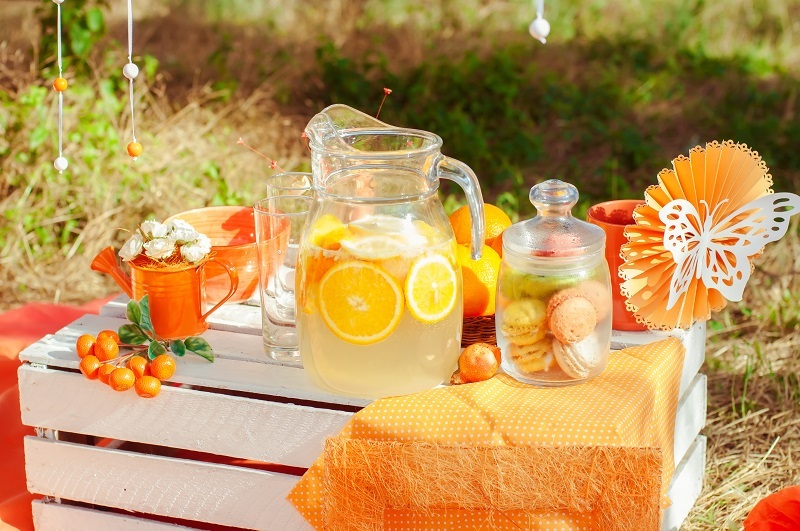Preserve the beauty of your blooms with these three straightforward tips
Posted on 17/08/2025
Preserve the Beauty of Your Blooms with These Three Straightforward Tips
There's nothing quite like a luminous bouquet of flowers to enliven a room and spark joy in the heart. However, their fleeting beauty can be a challenge to extend beyond a few short days. Whether you're a floral enthusiast or a casual bouquet collector, knowing how to preserve the beauty of your flowers can help you enjoy their vibrant charm much longer. In this guide, we'll reveal three straightforward tips that will help you maintain your blooms' freshness and brilliance, transforming your space and prolonging the magic of every petal.
Why Preserving the Natural Beauty of Flowers Matters
Fresh flowers are more than decorative pieces; they often carry sentimental value, marking important moments or serving as tokens of affection. By learning how to preserve your blooms, you can maintain those memories and keep your living environment feeling fresh and inviting. It's not just about aesthetics--prolonged floral freshness can even promote wellness by reducing decay-related allergens indoors.
- Enhance your home decor with longer-lasting arrangements.
- Preserve sentimental bouquets from weddings, anniversaries, and special occasions.
- Reduce waste by extending the lifespan of cut flowers and arrangements.
Understanding the Science Behind Flower Longevity
To keep the beauty of your blooms for days--sometimes weeks--it's essential to understand what causes them to wilt. After being cut, flowers lose their water source and must draw up moisture through their stems. Bacteria and air blockages can inhibit this process, accelerating wilting. With a few smart interventions, you can slow down this natural decline significantly.

3 Simple and Effective Tips to Maintain the Beauty of Your Blooms
Let's dive into three practical tips to preserve fresh flowers that will ensure your blooms remain beautiful and vibrant for as long as possible.
Tip 1: Provide the Optimal Environment for Your Blooms
The first--and arguably most important--tip for keeping your flowers fresh is to consider their environment. Environmental factors such as temperature, humidity, and light exposure play significant roles in the longevity of your bouquet.
- Avoid Direct Sunlight and Heat: Direct sunlight and heat sources cause flowers to wilt rapidly. Always place your vase in a cool, shaded area of your home, away from radiators, heating vents, or appliances that generate heat.
- Moderate Humidity: Too much humidity can promote mildew, while extremely dry air encourages dehydration. Aim for moderate indoor humidity and consider misting your blooms if the air is very dry.
- Keep Away from Ripening Fruit: Fruits such as bananas and apples release ethylene gas, which can dramatically speed up the aging of flowers. Store your fruits and flowers in separate rooms.
Ensuring the right environmental conditions is the foundation of preserving flower beauty for as long as possible.
Tip 2: Master the Art of Cutting and Water Maintenance
The way you cut and care for the stems of your flowers has a profound impact on their longevity. Here's how to do it the right way:
- Always Use Sharp, Clean Tools: Blunt scissors or knives can crush stems, impeding water uptake. Opt for a sharp pair of floral shears or a clean kitchen knife to make a clean cut.
- Cut Stems at an Angle: This increases the surface area for water absorption. Trim about 1-2 inches off the stems at a 45-degree angle immediately before placing them in water.
- Change Water Regularly: Bacteria build up quickly in stagnant water, clogging stems and shortening the vase life of your blooms. Change the water every other day to keep your flowers fresher.
- Remove Lower Leaves: Any leaves submerged in water will rot, promoting bacterial growth. Strip all foliage that will fall below the waterline before arranging your bouquet.
By combining these actions, you'll create perfect conditions for prolonging the beauty of your flowers, ensuring they stay vibrant and lively.
Tip 3: Boost your Blooms with Homemade Flower Food
Professional florists typically use flower food mixed into vase water, but you can achieve similar results with easy homemade solutions. These mixtures provide nutrients and prevent bacterial growth.
-
DIY Flower Preservative Recipe:
- 2 tablespoons lemon or lime juice (for acidity)
- 1 tablespoon sugar (as food)
- 1/2 teaspoon household bleach (to reduce bacteria)
- Quart (1 liter) of lukewarm water
- Aspirin or Vinegar for Extra Life: Crushing an aspirin tablet or adding a tablespoon of vinegar can acidify water and further inhibit bacterial growth, supporting flower freshness.
- Soda Water for Colorful Petals: Some swear by adding a splash of clear soda (with sugar) to vase water to promote brighter, longer-lasting petals.
These simple homemade supplement options help maintain the beauty and health of your blooms without expensive or specialized products. As an added benefit, they're readily available in most homes.
Bonus Advice: How to Revive Wilted Flowers
Don't lose hope if your flowers start to droop prematurely! Here are a few quick methods to bring them back to life:
- Submerge the Entire Bouquet: Place wilted blooms (except hydrangeas) in a sink or bathtub of cool water for 30-60 minutes. Submerged stems and petals can rehydrate and perk up.
- Re-trim the Stems: Repeat a fresh angled cut and return flowers to fresh water immediately. This opens up water channels.
- Apply a Quick Spray: Lightly mist petals with clean water to combat dehydration, especially in dry environments.
This quick intervention can often restore the charm and vitality of your favorite bouquet.
Long-Term Preservation: Drying and Pressing Blooms
While the tips above focus on maintaining fresh blooms, sometimes you'll want to keep your flowers as mementos for years to come. Here are two time-tested techniques:
- Air Drying: Tie flower stems together and hang them upside down in a cool, dry location out of direct sunlight. In 1-3 weeks, you'll have beautifully dried flowers to use in arrangements or crafts.
- Pressing Flowers: Place blooms between the pages of a heavy book lined with parchment or wax paper. Leave for two weeks. The result is delicate, artistic pressed flowers for scrapbooks, cards, or framing.
These long-term preservation strategies are ideal for meaningful bouquets from weddings, graduations, or other memorable occasions.
Frequently Asked Questions: Preserving Your Flower Arrangements
What flowers last the longest in a vase?
Some flowers are naturally longer-lived than others. Carnations, chrysanthemums, alstroemerias, and lilies are known for their impressive vase life. Mixing longer-lasting blooms with others can help keep your arrangement looking fresh for longer.
How often should I trim flower stems?
For best results, re-trim flower stems every 2-3 days to maintain optimal water uptake and keep your blooms in peak condition.
Can I use sugar alone to preserve flowers?
While sugar feeds your flowers, it can also encourage bacteria if not balanced with acid (lemon juice or vinegar) and a disinfectant (bleach or aspirin). The combination is essential to maximize your bouquet's longevity.
Is refrigerator storage suitable for bouquets?
Refrigeration at night can double the lifespan of some blooms. Place the vase in your fridge (if space allows) at 35-40?F--but avoid storing with fruits, as ethylene gas is harmful!

Conclusion: Enjoy Vibrant Blooms for Longer
No matter how you enjoy flowers--whether as a luxury, a hobby, or a meaningful keepsake--learning to preserve the beauty of your blooms is simple and rewarding. By providing the optimal environment, practicing stem and water care, and using homemade flower food, you can maintain fresh, stunning bouquets for days beyond their expected span. And with drying or pressing, even special arrangements can become cherished mementos. Try these tips today, and watch as your next bouquet becomes a lasting testament to nature's artistry in your own home!
Key Takeaways: Prolonging the Beauty of Flowers
- Keep your blooms cool, away from sunlight and fruit.
- Trim stems often and change water frequently for optimal freshness.
- Use simple, homemade flower food to nourish and protect your flowers.
- Consider drying or pressing for long-term preservation of special blooms.
With these three straightforward techniques to preserve flowers, every bouquet can be enjoyed to the fullest, retaining its color, fragrance, and joyful impact for far longer than ever before.







